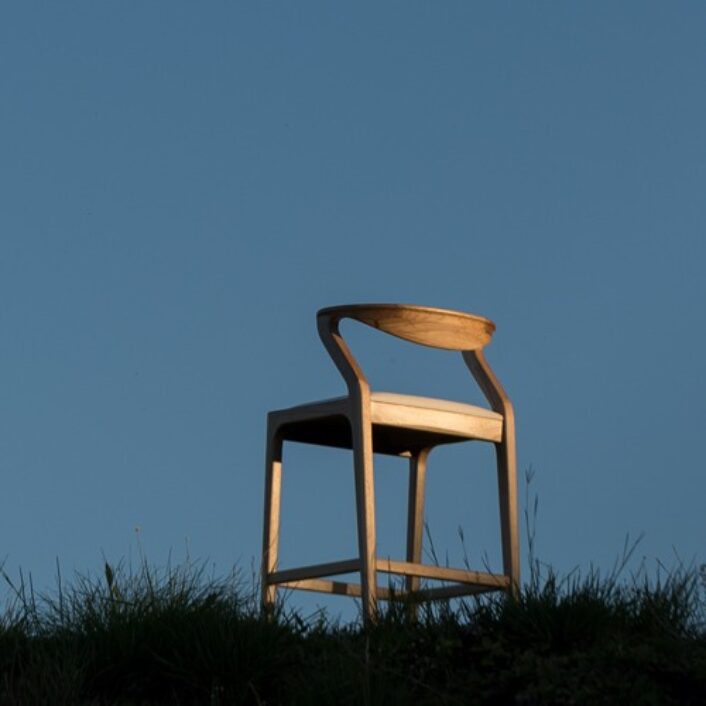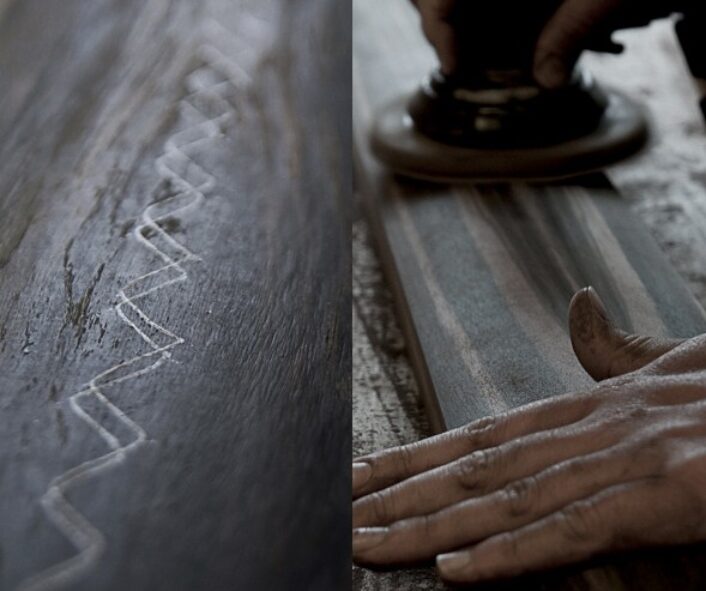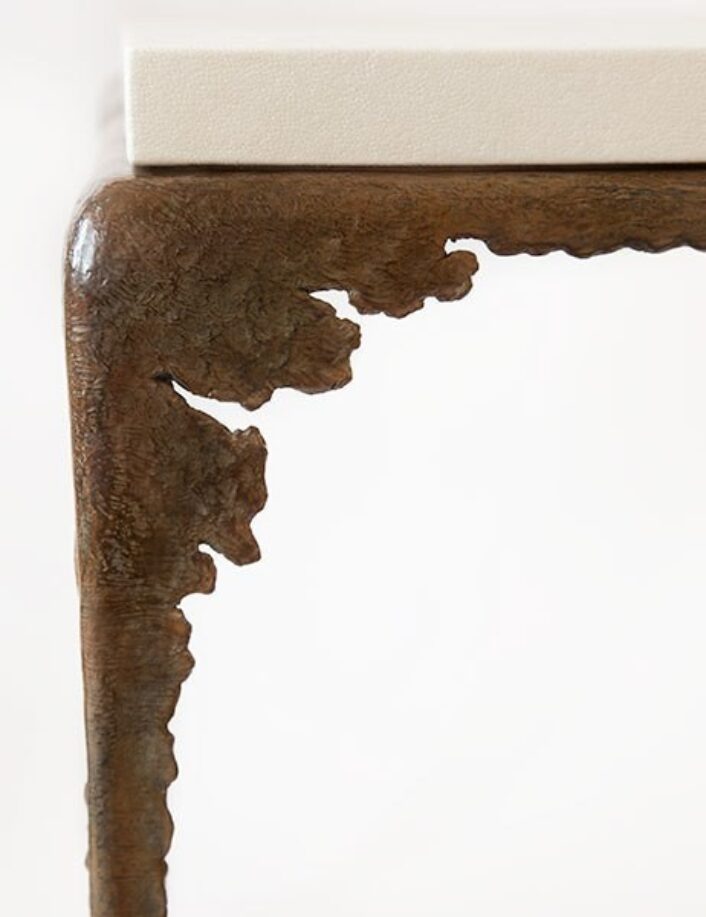Design
Stefan Bishop
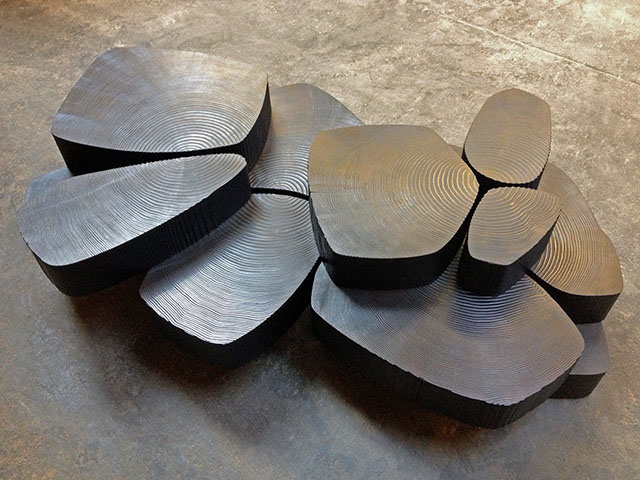
One of Bishop’s Ring Tables
Image courtesy of: Think Pure
Stefan Bishop does not need to search far for inspiration… his subconscious is constantly firing off ideas and images. The former real estate developer from Oregon who now resides in Los Angeles creates objects that fall somewhere between art and design. Each piece is carved out of salvaged wood and painstakingly crafted. The hope is that it will someday become a heirloom.
Whether he is making a sculpture or functional furniture, the quality is displayed by the scale and age of the wood itself. Often times, the pieces are sourced from enormous fallen trees… once, a waterlogged wood piece that had been removed from a sunken ship was used.
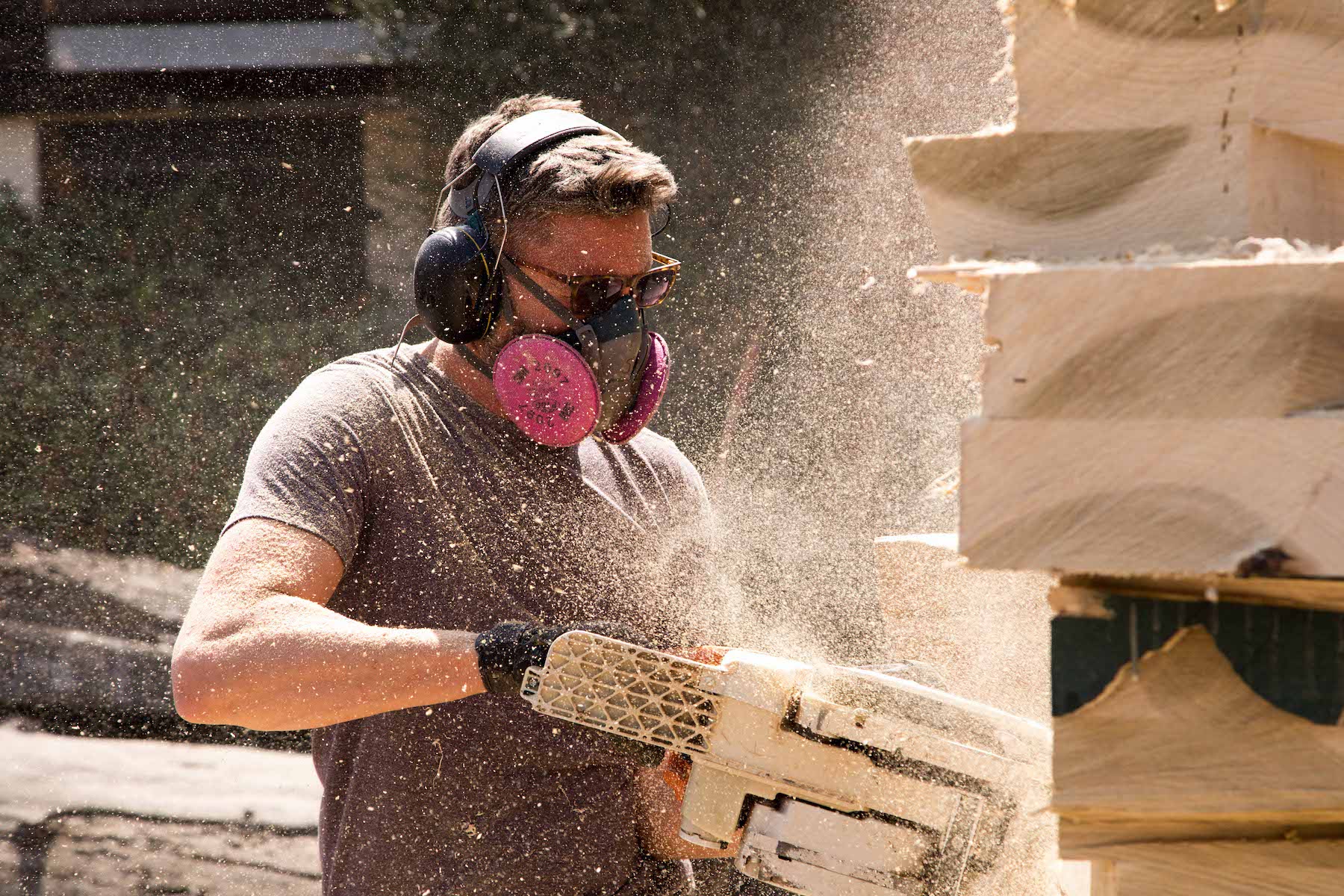
Prior to launching his own company, Bishop worked for a number of high-end furniture makers.
Image courtesy of: Surface Magazine
Bishop debuted his first line of furniture in 2013; until that point, it had been a bumpy road for the designer. Unfortunately, it was a personal and financial process that prompted the designer to return to his childhood passion of designing. He says (to Mallery Roberts Morgan), “When I was young design was an incredibly difficult process.”
The artist’s childhood move from the serenity of Eugene, Oregon to Boulder left Bishop “traumatized.” He says that he still has recurring dreams where he is navigating urban spaces… attempting to understand the unfamiliar topography of the city. Following school, Bishop apprenticed for a number of furniture makers in Berkley, California and Chicago. Afterwards, he moved to Los Angeles and began working in the engineering department of a big furniture manufacturer. Bishop bought into the idea that he wasn’t creative, so he left woodworking for a more traditional path.

A monolith…
Image courtesy of: KCRW
Bishop began to work in real estate and went from owning several luxurious homes to renting a studio apartment and getting divorced. He calls this period of his life his mid-life crisis. Luckily, Bishop met the “love of his life;” one night soon thereafter, he stayed up all night… inspired to draw. A mere three months later, now nine years ago, he abandoned all else and set out to become an artist yet again.
At some points in time, Bishop’s studio might be full of enormous monoliths which make up an imaginary city landscape. Elsewhere in the studio are tables made from sections of wood the designer removed from salvaged beams. The woods’ concentric rings point to all the secrets that the wood holds.
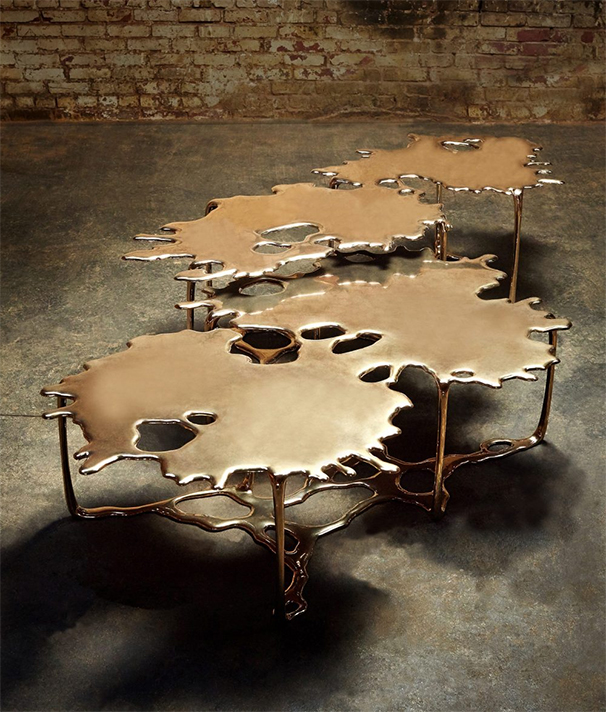
Puddle Table #5 and #6 De La Torre, limited edition of 12
The Puddle Tables are hand-carved in wood and cast in solid bronze or steel.
Image courtesy of: Stefan Bishop
About her client, Cristina Grajales, Bishop’s New York “agent” says, “The wood Stefan finds really dictates what he creates. He’s a very deep, profound person, and you can feel the hand behind the work. From the minute we saw his pieces, we were totally in love with him.”
It is evident that Bishop puts a lot of time and energy… and love… into each of his pieces. Yet he is the first to note that the wood determines his designs. From the deeply grooved pine and elm wood he uses, the pieces emerging maintain a connection to the earth from which they come.
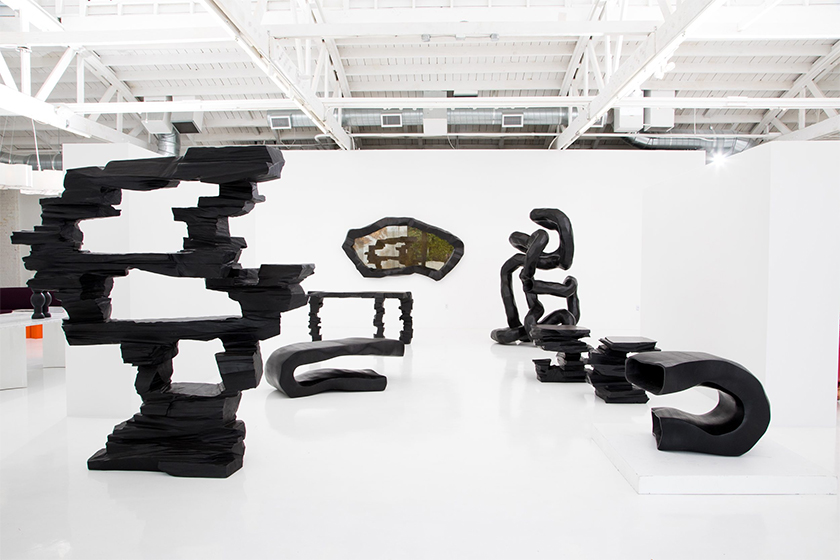
Bishop’s new pieces at the Ralph Pucci showroom in Los Angeles.
Image courtesy of: Galerie Magazine, photographed by: Chris Fortuna
Last year, Bishop debuted a fabulous show at Ralph Pucci’s Los Angeles gallery that featured a series of consoles, tables, shelves and mirrors. The items actually comprise two distinct collections, all in black char and total eight pieces. An initial work that he created, for the Calescent Series, was a large shelf with a jagged face that resembles a frightening cliff. Bishops says (courtesy of Galerie Magazine), “When Ralph saw it for the first time, he thought it looked like stacked embers from a fire—it has a very rugged, dark, heavy textural quality to it.”
The Zoetic Series is influenced by “living and vital” things; within this collection is a sensuous cocktail table with flowing lines and a large-scale sculpture whose twisting design follows an “intestine-like” tract. About that piece, he says, “The massive serpentine piece is the only one that’s purely sculptural,” says Bishop of the latter work. “It’s the largest one and consists of 350 separate pieces of wood to give it a long coiling snakelike figure.”
Each of the eight items in these two collections is connected to another through environmental references and Bishop’s laborious construction process. This involved process begins with planks of ash, walnut, and poplar wood that are stacked and laminated. The next step is lightly charring the planks prior to dying them black with pure Indian ink. Bishop says, “It creates a deeper rich black. The last step is to finish them with a top coat of varnish or wax.”
